Retention Marketing: How To Win Back Your Existing Customers
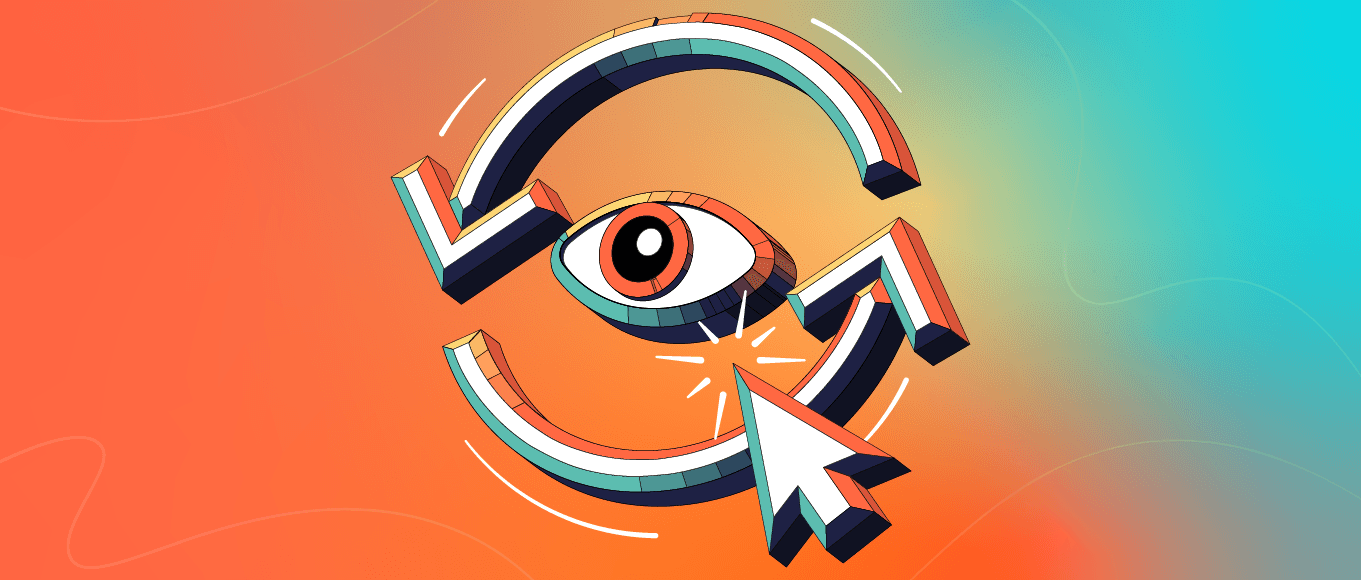 It's no secret that acquiring new customers is essential for business growth. Many marketers focus on high-volume channels like Facebook, TikTok, and Google. This short-sighted approach neglects high-value opportunities like retention marketing.
To improve the effectiveness of your marketing efforts, consider fostering customer loyalty with a renewed retention strategy. In this article, we review 5 effective retention marketing tactics you can implement to profitably win back more of your customers.
It's no secret that acquiring new customers is essential for business growth. Many marketers focus on high-volume channels like Facebook, TikTok, and Google. This short-sighted approach neglects high-value opportunities like retention marketing.
To improve the effectiveness of your marketing efforts, consider fostering customer loyalty with a renewed retention strategy. In this article, we review 5 effective retention marketing tactics you can implement to profitably win back more of your customers.
Lifetime Value
Customer lifetime value must exceed customer acquisition costs in a sustainable marketing strategy. The difference must cover direct and indirect costs and leave room for profit. By increasing the number of purchases an average customer places with your business, lifetime value and overall margins improve. To illustrate this point, Bain & Company conducted a study that revealed that a mere 5% lift in customer retention increased profitability by 25% to 95%.Acquisition Costs
Since Apple's iOS 14.5 update, targeting and attribution have become much more difficult on Facebook and Instagram. Previously, about 70% of iPhone users shared a unique identifier with advertising platforms that enabled ad personalization. After the update, estimates put this figure around 5% for U.S. consumers. Advertisers now must allocate budgets with incomplete information without the ability to track and attribute user actions. As Google plans to roll out similar privacy-oriented changes by 2023, many businesses face unprecedented customer acquisition costs. Fortunately, the cost of re-acquiring an existing customer is a fraction of the cost of acquiring a new customer. According to a study from Invesp, customer acquisition is now five times more expensive than customer retention.Average Order Value
After earning trust in the first transaction, businesses often see much higher order values from repeat customers in subsequent transactions. Highly engaged customers buy 90% more often and spend 60% more per transaction. While repeat customers may only make up 8% of visitors, they can contribute up to 40% of all sales.Relationship Management
Repeat customers are also simpler relationships to nurture. By definition, these customers have already been onboarded and require little in the way of re-education. Because they remain deeper in the marketing funnel, the success rate of selling to existing customers is around 60-70%, while selling to a new lead is only 5-20%.1. Calculate Your Current Retention Rate
To measure the impact of your changes, first, establish a baseline understanding of your current retention metrics. Depending on your business model, there are various ways to do this. Software businesses generally analyze churn, the percentage of customers that don't renew their subscription over a given period.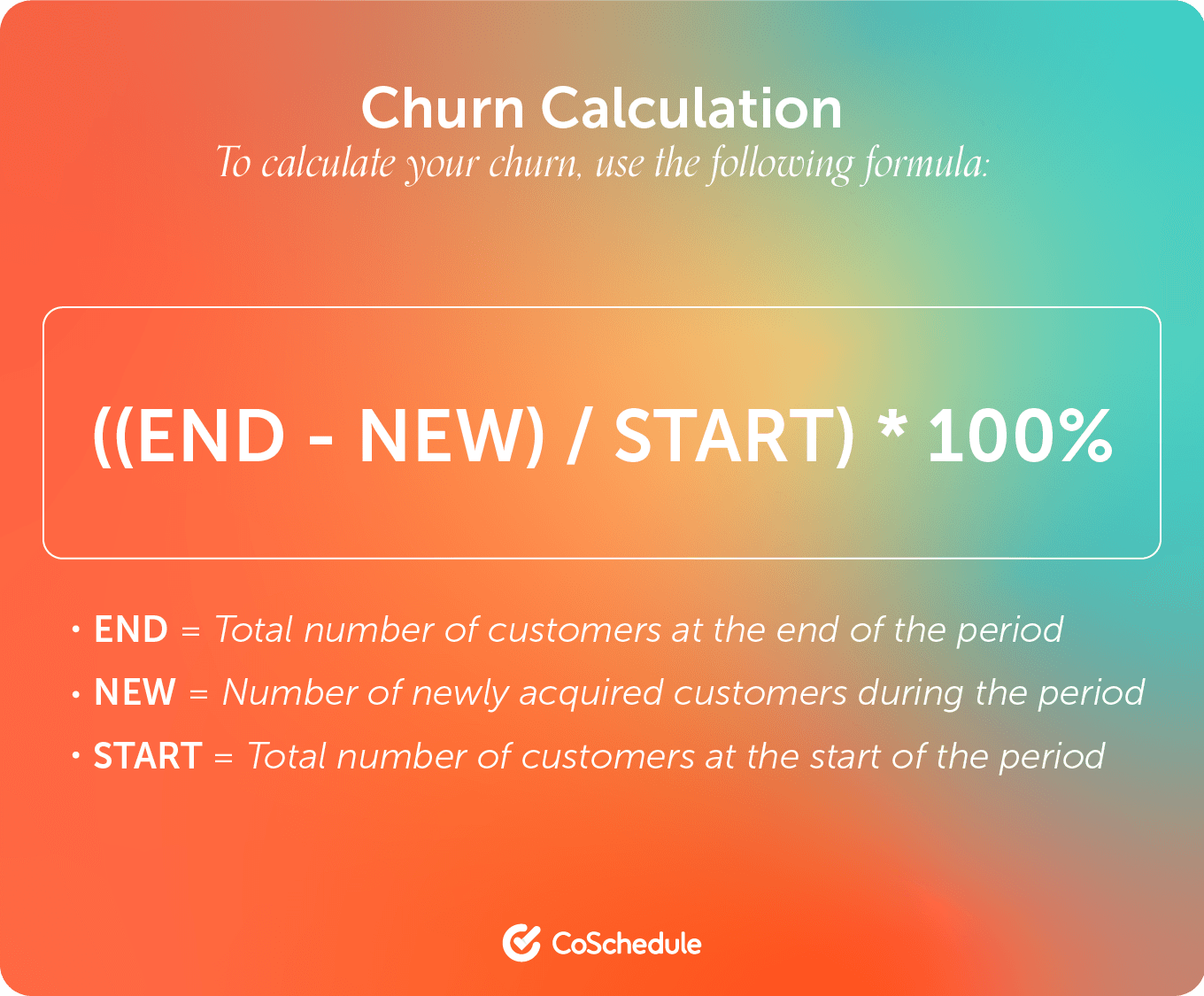 Product businesses, however, are better suited to look at repeat customer rates.
Product businesses, however, are better suited to look at repeat customer rates.
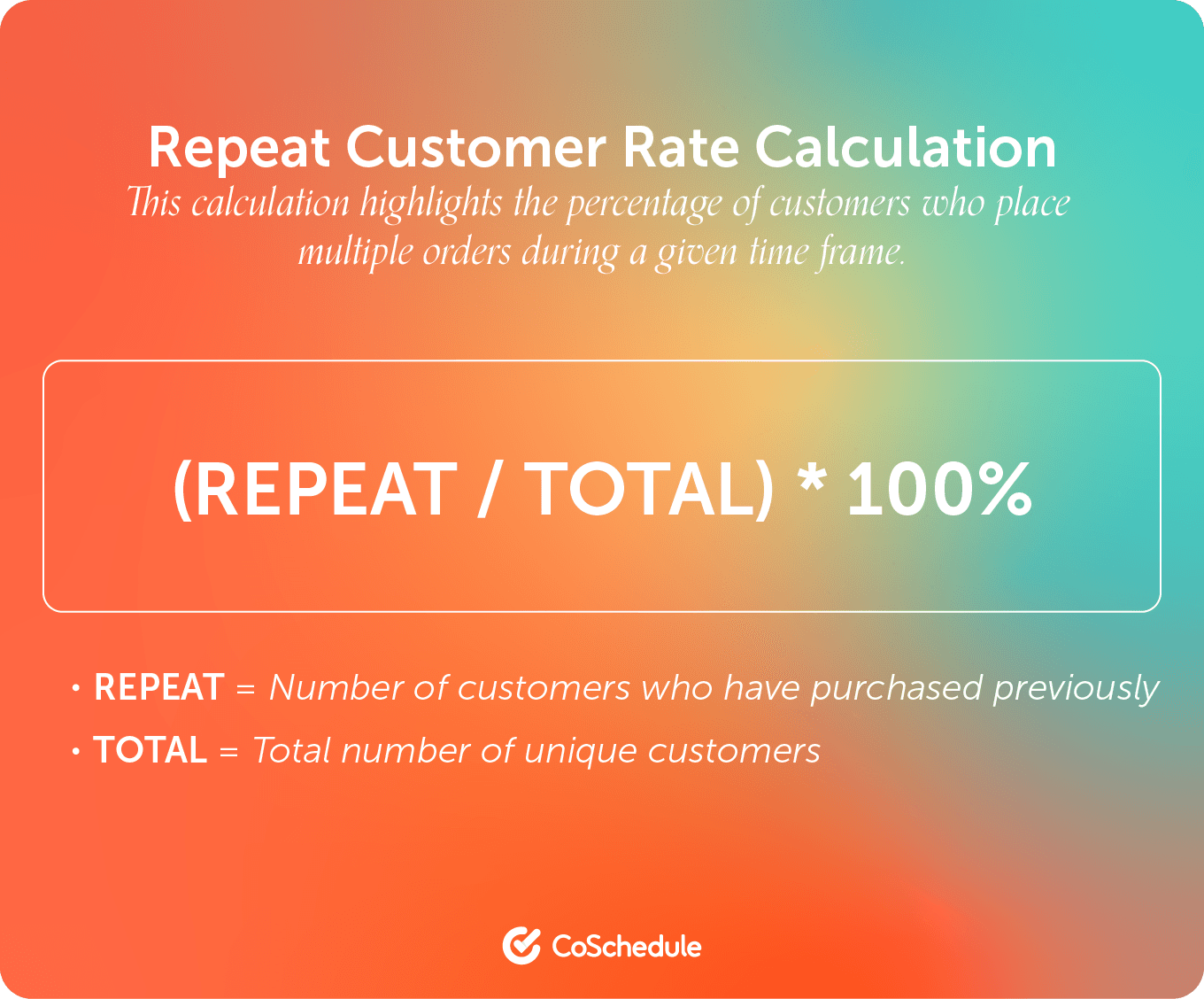
2. Walk Through The Customer Journey
To identify where you may lose customers, walk through their journey with your product or service. You should document the entire process, including what actions customers take, what questions they may have, and how they are likely to feel at each step. Then, look for friction points and opportunities to improve the experience. For example, are there any confusing, complicated, or time-consuming steps to complete? Proactively addressing these issues can prevent frustration and keep customers engaged.3. Improve The Onsite Experience For Returning Visitors
Returning visitors have different needs and expectations than first-time visitors. To cater to these high-value customers, your website should provide them with a customized experience. Consider enabling accounts where customers can store payment and shipping information, create wishlists, and build saved shopping carts. With web personalization software, you can even serve visitors custom content based on location, purchase history, and various other factors. Simply welcome back returning customers and recognize their loyalty to forge stronger relationships and improve retention. Then, add personalized product recommendations and expedite the checkout process with saved data to further enhance their shopping experience.4. Foster A Personal Connection
Create brand loyalty by standing out from the crowd and providing an unparalleled customer experience. Revisit your customer journey and brainstorm ways to over-deliver and emphasize your brand's culture and values. Thoughtful gestures like handwritten notes, birthday cards, and free samples show your customers that they are more than just a number. Also, examine your email marketing strategy. Are previous customers bombarded with promotional and sales emails? Consider integrating more meaningful content that interests and educates customers or highlights the company mission. To simplify this process, try using AI tools to expedite your writing speed and generate new topic ideas.1. Tailor The Customer Experience
Delight your returning customers and encourage repeat purchases with a personalized and simplified shopping experience. Use your existing customer data, such as purchase history and web browsing behavior, to curate content from hero images and headlines to specific products and blog posts. Take your personalization capabilities further by gathering zero-party data through on-site forms, surveys, and your checkout process. With this information, you can customize website categories or segments to streamline the product discovery and education process. Source
Care/of, for example, guides customers through a lifestyle survey that recommends relevant supplements. Returning visitors are directed toward potential solutions for the issues they identified. This retention marketing strategy makes customers feel “seen” and streamlines future purchases.
Source
Care/of, for example, guides customers through a lifestyle survey that recommends relevant supplements. Returning visitors are directed toward potential solutions for the issues they identified. This retention marketing strategy makes customers feel “seen” and streamlines future purchases.
2. Segment Follow-Up Emails
Email is one of the most important channels to focus on when revamping your retention marketing efforts. First, ensure you're only sending relevant messages to customers based on their relationship with your brand. For example, a one-time buyer should receive different content than a VIP customer or a brand-new lead. With specific email marketing software, you can even send emails to customers who click on a product but don’t purchase it. You can also use this type of engagement-specific targeting to prevent customer churn. Identify customers who have not taken the desired action in a certain number of days, and create an automated reactivation campaign. Develop a sequence of two to four emails to be sent over a two-week period that includes a mixture of personal and valuable content. Toward the end of the sequence, use urgency tactics and a strong incentive to nudge customers back to your site. Chipotle takes advantage of this approach with a BOGO coupon that expires soon and a subject line that reads: “Where have you been? We miss you.”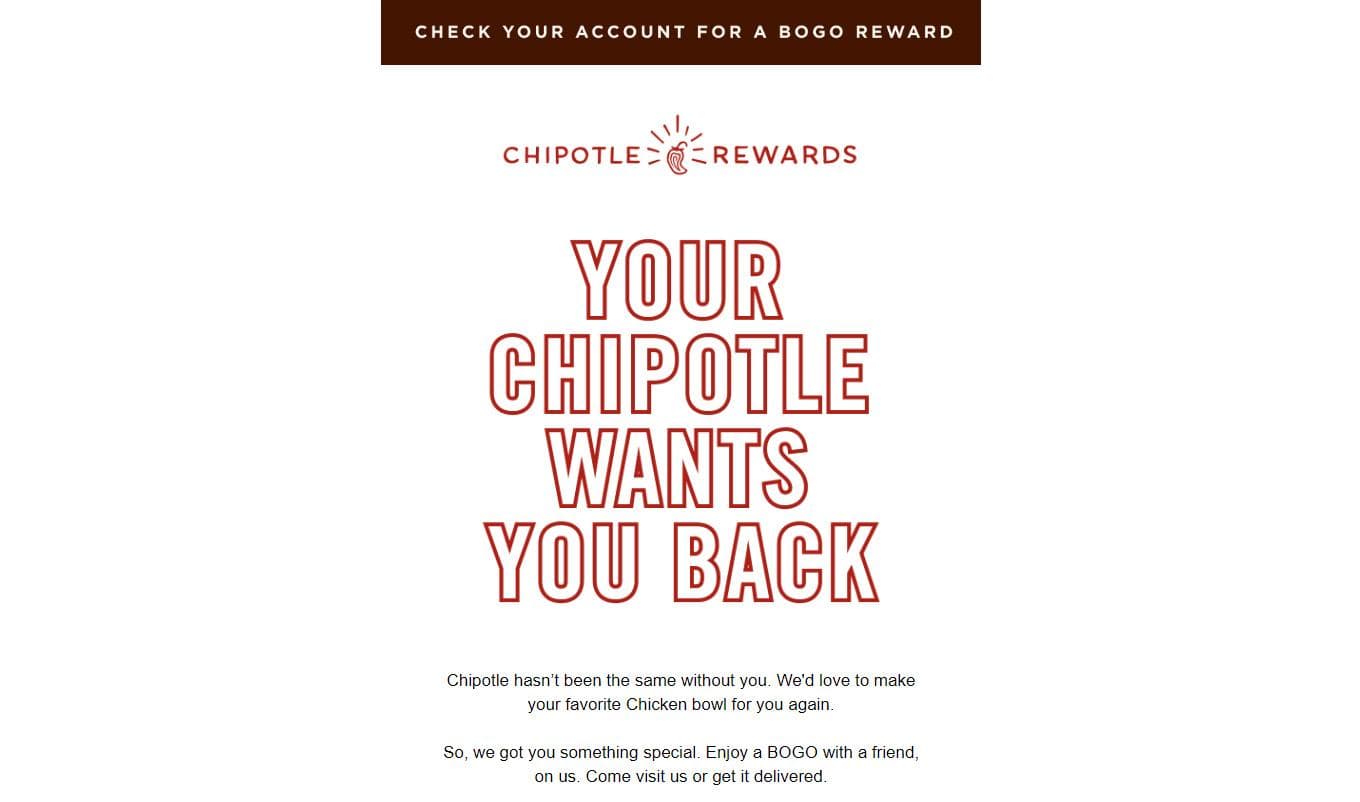 Source
Personalized discounts are a great way to keep customers coming back. With almost zero marginal cost of contact via email, it's easy to test different offers and strategies until you find what works best. Capitalize on these established relationships by passing a portion of the saved acquisition costs back to the returning customer through discounts. Focus most of your promotions on high Average Order Value (AOV) and high-margin products to create a true win-win.
Source
Personalized discounts are a great way to keep customers coming back. With almost zero marginal cost of contact via email, it's easy to test different offers and strategies until you find what works best. Capitalize on these established relationships by passing a portion of the saved acquisition costs back to the returning customer through discounts. Focus most of your promotions on high Average Order Value (AOV) and high-margin products to create a true win-win.
3. Advocacy Programs
Encourage customers to promote your business with an advocacy program. Turning your existing customers into raving fans can reinforce brand loyalty while generating social proof and organic traffic. There are a few different ways to implement an advocacy program, but the most common is through a referral program. Referral marketing programs incentivize customers to refer your brand to their friends and family through either one-sided or two-sided discounts. One-sided programs reward only the referrer for a transaction, whereas two-sided programs reward both the referrer and the new user.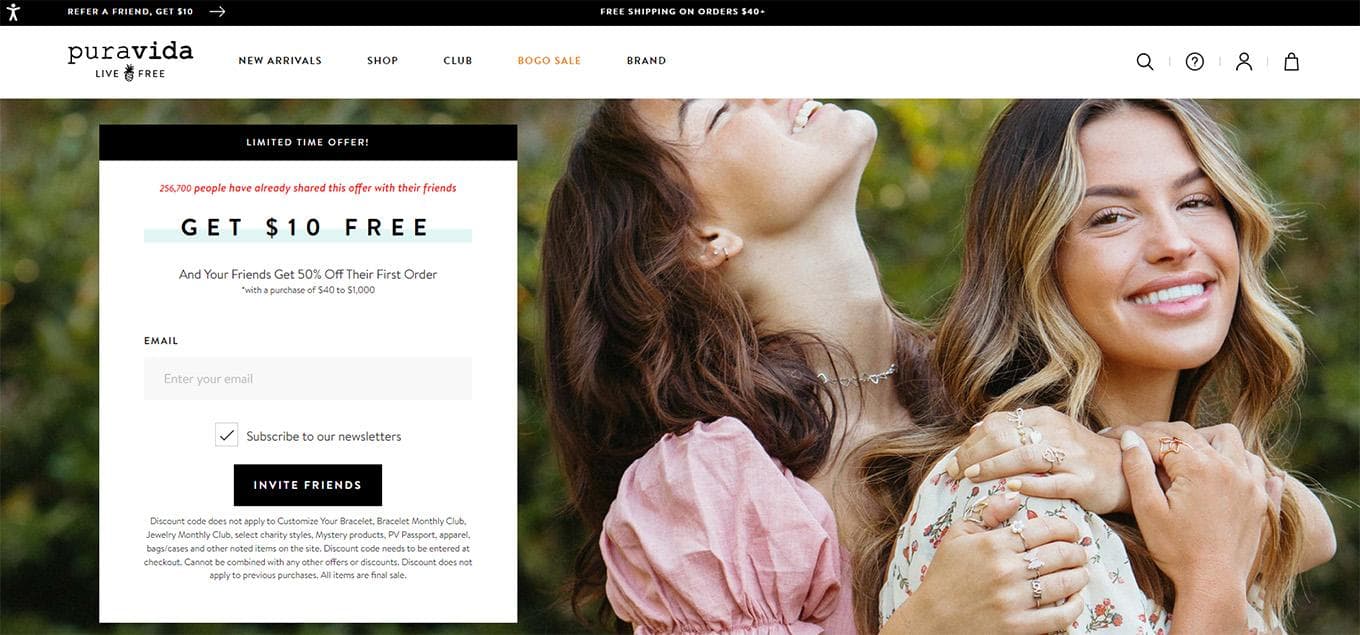 Source
With a bit of creativity, you can use advocacy programs in almost any business model. Pura Vida Bracelets, for example, uses a two-sided 'Refer A Friend' campaign that gives $10 to the referrer and 50% off to the new lead. Dropbox famously used a similar program, offering free cloud storage instead of product discounts, and ultimately increased signups by 60% and generated more than 2.8 million direct referral leads in the first 18 months.
Source
With a bit of creativity, you can use advocacy programs in almost any business model. Pura Vida Bracelets, for example, uses a two-sided 'Refer A Friend' campaign that gives $10 to the referrer and 50% off to the new lead. Dropbox famously used a similar program, offering free cloud storage instead of product discounts, and ultimately increased signups by 60% and generated more than 2.8 million direct referral leads in the first 18 months.
4. Loyalty Programs
Another effective form of retention marketing is a loyalty program. Loyalty programs offer special benefits to customers who have reached designated thresholds. For example, a coffee shop might offer a free drink after 10 purchases, and an ecommerce company might offer VIP status to customers who have spent more than $500. Source
Consider what rewards make sense for your business to implement a loyalty program. Can you offer access to exclusive content or a VIP-only Facebook group or Slack channel? Is there a way to provide free shipping or early access to new products? Fabletics takes this approach to product exclusivity by hiding certain products from non-subscribers. Get creative and experiment with different loyalty program structures until you find what works.
The key to success with loyalty programs is consistent engagement. You can also gamify your loyalty program like Elevated Faith, by implementing a points-based system that rewards users for actions like creating an account, placing an order, and leaving a review. Over time users accumulate points and gain access to greater discount tiers, which increases the opportunity cost of shopping with a competitor.
Source
Consider what rewards make sense for your business to implement a loyalty program. Can you offer access to exclusive content or a VIP-only Facebook group or Slack channel? Is there a way to provide free shipping or early access to new products? Fabletics takes this approach to product exclusivity by hiding certain products from non-subscribers. Get creative and experiment with different loyalty program structures until you find what works.
The key to success with loyalty programs is consistent engagement. You can also gamify your loyalty program like Elevated Faith, by implementing a points-based system that rewards users for actions like creating an account, placing an order, and leaving a review. Over time users accumulate points and gain access to greater discount tiers, which increases the opportunity cost of shopping with a competitor.
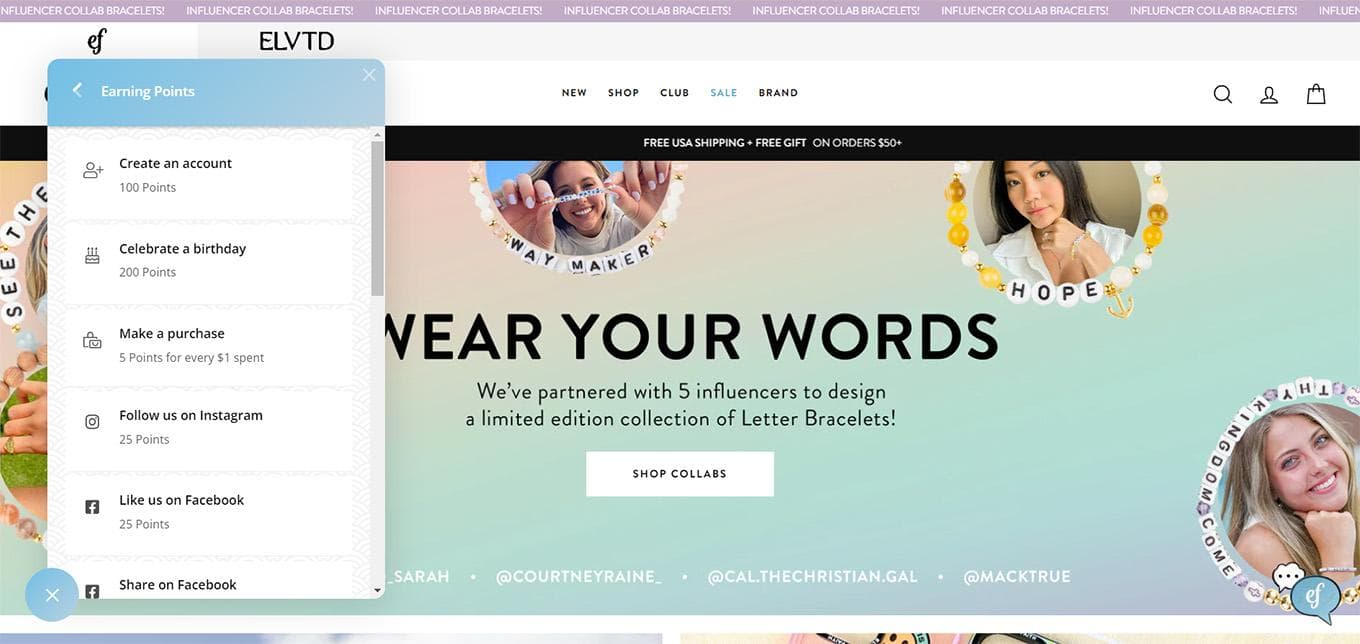 Source
This lock-in effect is a tell-tale sign of successful retention marketing, where repeat customers are increasingly loyal, and new customers are motivated to stay engaged.
Source
This lock-in effect is a tell-tale sign of successful retention marketing, where repeat customers are increasingly loyal, and new customers are motivated to stay engaged.
5. Great Customer Service
Providing excellent customer service is an easy way to turn a cost center into a primary retention channel. With attentive and responsive customer service, your brand will differentiate itself and build trust in the eyes of consumers. Even negative customer experiences can often be turned around when representatives take the time to truly listen and thoughtfully address customer concerns.Pair helpful customer support with a gracious return, exchange, and shipping policy for excellent word-of-mouth-worthy service. If you can make an unpleasant experience like processing an online exchange as hassle-free as possible, you can turn a one-time customer into a lifelong fan. Chewy, the online pet store, recently went viral for just this. After accepting a return for unused dog food after the pet's death, the company mailed the grieving dog owner flowers and a card. Not only does this sympathetic act make a customer feel valued, but it also contributes to Chewy's phenomenal reputation among pet owners. Further, emphasize your retention marketing efforts by adding a VIP customer service line. This practice shows appreciation for your most loyal customers and incentivizes them to stay engaged with your brand. Delta Airlines implemented priority customer service queues alongside its loyalty program. Each tier of status qualifies customers for faster assistance, which can be a significant perk when changing travel plans in a pinch.I contacted @Chewy last week to see if I could return an unopened bag of my dog’s food after he died. They 1) gave me a full refund, 2) told me to donate the food to the shelter, and 3) had flowers delivered today with the gift note signed by the person I talked to?? ????????
— Anna Brose, MSc (@alcesanna) June 15, 2022
 Source
Source


